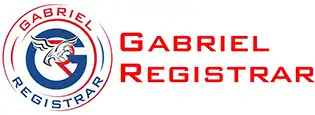Two international standards, ISO 17100 and ISO 18587, address translation services and machine translation post-editing, respectively. Both seek to guarantee high-quality translation results by establishing explicit requirements for processes, resources, and quality assurance.
ISO 17100:2015 – Translation Services Requirements
The standards for essential procedures, resources, and other components required to provide excellent human translation services are outlined in ISO 17100.
Key elements:
Resources for Skilled Human Resources:
- Formal training in translation, comparable experience, or both is required for translators.
- Every project need revisors, who are separate reviewers.
Management of Projects:
- Sets out the duties of project managers.
- Makes sure that there is adequate preparation, resource distribution, and communication.
The Translation Procedure:
- Prior to production: Preparation and agreement on requirements.
- Manufacturing: Translation and modification (independent verification).
- Final verification, feedback, and archiving are all part of post-production.
Quality Assurance:
- Consistency evaluations, linguistic assessments, and verification procedures.
Communication with clients:
- Prioritizes comprehending client needs and incorporating feedback.
Result:
- A methodical strategy for providing dependable and consistent human translation services.
ISO 18587:2017 - Post-Editing Machine Translation Output
This standard specifically addresses the entire post-editing process of machine translation (MT) output performed by humans in order to produce a quality comparable to human translation.
Key elements:
Scope:
- Covers "full post-editing," which includes creating a linguistically and stylistically accurate final product as well as correcting significant faults.
After Editors:
- Must be skilled linguists (using standards comparable to those in ISO 17100).
- Proficient at using MT output and editorial judgment.
Procedure:
- Analyze MT production.
- Use proper grammar, semantics, terminology, formatting, and style.
- Make sure the finished product is as high quality as human translation.
Client Requirements:
- Establish clear expectations, including terminology, tone, and domain-specific needs.
Quality Assurance:
- Final review and verification should be included in post-editing.
Result:
- An established structure to improve the accuracy and consistency of translations created by machine translation and then corrected by humans.
The combination use of ISO 17100 and ISO 18587
If used together:
- The quality of processes led by humans is guaranteed by ISO 17100.
- Rigorous post-editing in accordance with ISO 18587 ensures that the output of MT meets human-quality standards.
They worked together to:
- Help translation companies implement hybrid workflows that combine human and machine translation.
- Regardless of the translation strategy employed, make sure the quality remains consistent.
- Encourage openness, productivity, and client happiness.




